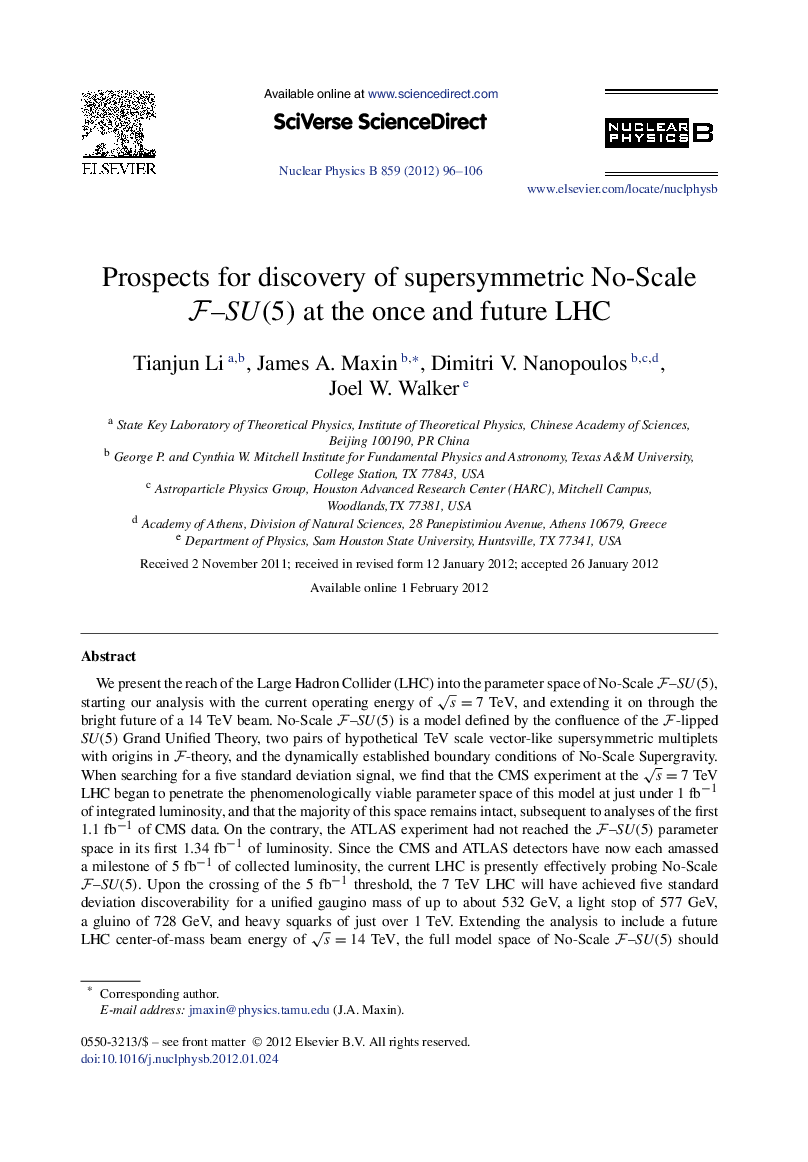| Article ID | Journal | Published Year | Pages | File Type |
|---|---|---|---|---|
| 1840852 | Nuclear Physics B | 2012 | 11 Pages |
Abstract
We present the reach of the Large Hadron Collider (LHC) into the parameter space of No-Scale F-SU(5), starting our analysis with the current operating energy of s=7TeV, and extending it on through the bright future of a 14 TeV beam. No-Scale F-SU(5) is a model defined by the confluence of the F-lipped SU(5) Grand Unified Theory, two pairs of hypothetical TeV scale vector-like supersymmetric multiplets with origins in F-theory, and the dynamically established boundary conditions of No-Scale Supergravity. When searching for a five standard deviation signal, we find that the CMS experiment at the s=7TeV LHC began to penetrate the phenomenologically viable parameter space of this model at just under 1fbâ1 of integrated luminosity, and that the majority of this space remains intact, subsequent to analyses of the first 1.1fbâ1 of CMS data. On the contrary, the ATLAS experiment had not reached the F-SU(5) parameter space in its first 1.34fbâ1 of luminosity. Since the CMS and ATLAS detectors have now each amassed a milestone of 5fbâ1 of collected luminosity, the current LHC is presently effectively probing No-Scale F-SU(5). Upon the crossing of the 5fbâ1 threshold, the 7 TeV LHC will have achieved five standard deviation discoverability for a unified gaugino mass of up to about 532 GeV, a light stop of 577 GeV, a gluino of 728 GeV, and heavy squarks of just over 1 TeV. Extending the analysis to include a future LHC center-of-mass beam energy of s=14TeV, the full model space of No-Scale F-SU(5) should be visible to CMS at about 30fbâ1 of integrated luminosity. We stress that the F-SU(5) discoverability thresholds discussed here are contingent upon retaining only those events with nine jets or more for the CMS experiment and seven jets or more for the ATLAS experiment.
Related Topics
Physical Sciences and Engineering
Mathematics
Mathematical Physics
Authors
Tianjun Li, James A. Maxin, Dimitri V. Nanopoulos, Joel W. Walker,
